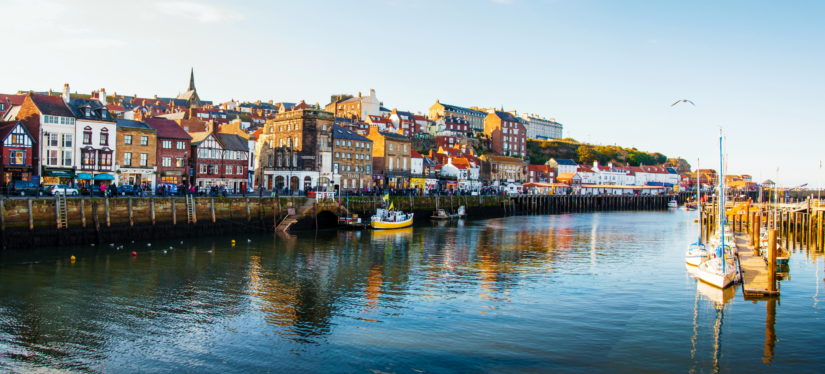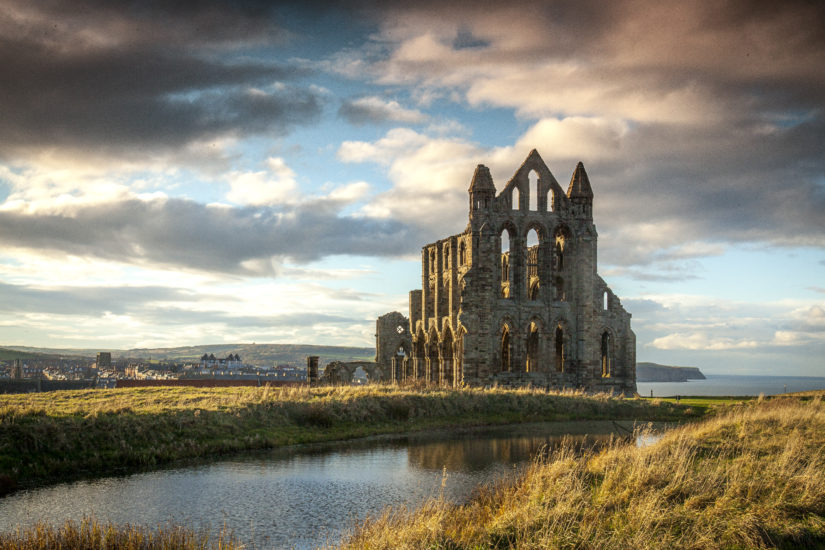
To celebrate the birthday of famous Gothic horror author Bram Stoker, we’re revisiting this article Susie Kearley wrote for one of our Specials.
Have you ever visited wonderful Whitby?
Even without the links to Bram Stoker’s legendary vampire Dracula, Whitby has all the ingredients to draw tourists from far and wide.
The town holds particular allure, however, for fans of the Count. Or for those with a penchant for Gothic architecture and Victorian fashions.
Stoker stayed at the Royal Hotel on Whitby’s West Cliff in the summer of 1890. He was taking a break from his theatre company, which had just completed a disastrous tour of Scotland.
Looking through a history book at Whitby Library, he came across an account of the 15th-century Romanian prince, Vlad III, or Vlad Dracula. Following his death, however, he would be more commonly known as Vlad the Impaler.
It was this trip that inspired Stoker’s famous fictional bloodsucker.
Stoker wandered through Whitby’s characteristic cobbled streets and alleyways. He spoke to locals and hearing some of the myths, legends, and real events associated with the town.
The stories inspired parts of his vampire tale. By the time his family came to join him at the hotel 10 days later, some of the groundwork for Count Dracula had already been done.
Whitby today
So what do visitors to Whitby see today?

iStock.
Well, on the evening of our arrival at Whitby we walk along the cliff tops to meet local tour guide.
Harry’s “‘Dracula Walk” begins at Whitby’s iconic Whalebone Arch.
A crowd assembles. At 8 p.m., Harry dons a top hat and Victorian ensemble and begins his talk by explaining that the writer stayed at the Royal Hotel opposite while researching his famous story.
He leads us down the hill to the waterside, stopping at intervals en route to tell us more about Stoker’s stay in Whitby.
“Stoker was so absorbed in writing his story that the cleaning lady at the hotel had to shoo him out of his room,” Harry explains. “And the story took him a full seven years to perfect.”
As our tour continues, Harry tells us about events that inspired the author. These include a rickety old carriage travelling down the cobbled streets, and the cargo of coffins that was washed overboard when a ship ran into rocks as it approached the harbour.
Harry’s dramatic Victorian tour takes us through Whitby’s narrow alleyways, and alongside the harbour at night. It’s a nice way to soak up the atmosphere and see key locations connected to Bram Stoker.
The tour concludes at the Royal Hotel, where Stoker stayed. Here you can get a drink, a meal, or book a room if you wish.
Whitby Abbey
In the morning, we walk into the town and climb the 199 steps up to Whitby Abbey. Fortunately, you can get the Whitby Tour Bus if you’re not keen on steps.
The Abbey is a charming monument dating back to the 13th century. Built on the site of a 7th-century monastery, today the ruin that attracts visitors from around the world.

iStock.
We stroll around the gorgeous Gothic landmark. The audio-tour tells us about the Benedictine monks who lived and worshipped there.
On the lawns, actors are entertaining a group of children with tales of St Hilda, founder of the Abbey.
Before construction began, she apparently had to banish snakes from the grounds. According to legend, she turned them into stone. For years, people thought the ammonite fossils found on the beaches below were St Hilda’s petrified snakes.
Even today, it’s said that the seagulls revere St Hilda so much that they never foul the Abbey grounds!
There is also an Abbey museum and visitor centre, housing archaeological finds, memorial crosses and ornamental faces. Some of the exhibits provide insights into the monks’ and nuns’ ways of life.
We sample some English Heritage wines and “vampire relishes” while we’re there, and then visit the fascinating 12th-century church of St Mary next door.
The perfect setting
Whitby enchanted Bram Stoker — its hills and valleys, the Abbey and the ancient church on the hill, with its beautiful tombstones . . . and bats!
It seemed the perfect setting for a vampire tale!
But so often, visitors to Whitby forget that Bram Stoker’s work was fiction, and they ask to see Count Dracula’s grave.
A former rector of St Mary’s church reportedly used to tease people by sending them to see “Dracula’s grave”, pointing to an old tomb, where the inscription had weathered away.
If you take the open-top bus ride into the town, you’ll learn more about Bram Stoker and Dracula.
Then, in the centre, you can visit a “Dracula Experience” with special effects and actors to bring it all to life!
For more travel features from the “Friend”, click here.
If Gothic Whitby has inspired you to write a story for our magazine, click here to see our submission guidelines.




